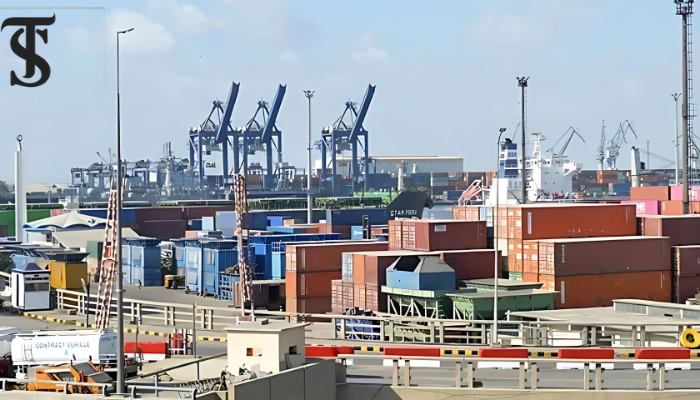Economic Rise of India: Opportunities and Challanges

India’s economic rise has sent ripples through South Asia, presenting both opportunities and challenges for the region. Once struggling with a foreign exchange crisis, India’s bold economic reforms in 1991 ushered a new era of liberalization, privatization, and globalization. China’s growing influence in the region, particularly through the Belt and Road Initiative (BRI), creates competition and concerns about a “string of pearls” strategy encircling India. Furthermore, political dilemma between India and Pakistan over Kashmir is a major source of tension and stability for South Asia. Internal unrest in some countries poses significant obstacles to regional cooperation and development.
Back in 1991, when India faced a looming foreign exchange crisis, the government took bold steps to turn things around. They declared significant economic reforms, basically putting an end to the restrictive license Raj system. Taxes and import duties were drastically reduced, and barriers on prices and the entry of new businesses were lifted. The government even put up several state-owned enterprises for sale, signaling a shift towards a more open market. It was like rolling out a red carpet for foreign investors, showcasing a departure from the socialist approach. The new direction emphasized principles of liberalization, privatization, and globalization.
With a population exceeding 1.8 billion, South Asia region is facing harsh realities of fierce armed conflicts, the tense specter of nuclear brinkmanship, substantial obstacles to human development, and the looming threat from climate change. The South Asian region presents an expansive consumer market, a realization that India has actively acted upon by championing endeavors like the South Asian Free Trade Area (SAFTA) and the development of crucial transport corridors, including the International North-South Transport Corridor and the Chabahar Port project in Iran. These initiatives are geared towards elevating regional trade, enhancing connectivity, and establishing India as a key economic hub in South Asia.

The tension between China and India, two prominent Asian powers, stems from their emergence as nations with nuclear capabilities and large populations. Despite both countries harboring a shared desire for multipolarity, a sense of mutual suspicion, colors their interactions. This dynamic has given rise to a competitive relationship where each nation strives to limit the other’s influence. Beijing has managed to gain influence over important ports in the Indian Ocean, like Gwadar in Pakistan, Hambantota in Sri Lanka, and Chittagong in Bangladesh. This has left New Delhi feeling uneasy, as there is a sense that China is implementing a “string of pearls” strategy to surround and limit India. From India’s point of view, China’s increasing influence in the region has put them in a competitive situation.
South Asia countries economy is not only benefiting the country itself but is also playing a crucial role in driving growth and development within the region. Engaging actively in gatherings like the South Asian Association for Regional Cooperation (SAARC), the Bay of Bengal Initiative for Multi-Sectoral Technical and Economic Cooperation (BIMSTEC), and the Indian Ocean Rim Association (IORA), the nation is dedicated to building connections among South Asian countries through diplomatic efforts. This region need to strengthen regional bonds, tackle shared issues, and promote economic teamwork, all geared towards creating a more stable and cooperative community.
India’s commitment to the “Neighborhood First” policy really highlights the importance of working closely with the neighbors and building strong connections. In the words of former Prime Minister Atal Bihari Vajpayee, “While you can choose different friends, the proximity of your neighbors remains constant.” Take, for example, the Kaladan Multi-Modal Transit Transport Project – it’s like a bridge that brings India’s northeast closer to Myanmar, not just on the map but in terms of boosting trade and making the region more connected and intertwined.
Harnessing the ambitions of the Belt and Road Initiative (BRI), Beijing has bolstered its ties in South Asia by making substantial infrastructure investments and enhanced connectivity through sea, road, and rail networks. From 2018 onward, China has pledged or injected over US$150 billion into the economies of Afghanistan, Bangladesh, Maldives, Myanmar, Nepal, Pakistan, and Sri Lanka. Notably, China has emerged as the primary foreign investor in Maldives, Pakistan, and Sri Lanka.

Although India is worried about the potential for a Taliban-controlled Afghanistan to harbor terrorists opposed to India, New Delhi has opted to take a chance by building working ties with the Taliban. In June 2022, India dispatched a technical team to its embassy in Kabul to keep essential operations running in the country. Furthermore, there are reports that the Taliban asked New Delhi last December to complete 20 stalled infrastructure projects in Afghanistan, possibly signaling an effort to rival China’s Belt and Road Initiative (BRI).
India faces several hurdles in its current approach to regional aid and development, such as, limited availability of resources, hurdle lies in ensuring the punctual completion of projects, the political dynamics in host countries such as the ‘India Out’ campaign in the Maldives significantly influence project implementation.
The ongoing political tensions, especially the enduring rivalry between Pakistan and India, are like obstacles to growth, as both nations compete for authority over the disputed northern state of Jammu and Kashmir. India and the United States have yielded a deepening partnership, primarily driven by their shared concerns regarding China’s growing influence in the Indo-Pacific region. While this alliance presents significant opportunities for both nations, it simultaneously intensifies concerns about heightened regional tensions and potential escalation within the already complex geopolitical landscape of South Asia.
In a nutshell, India’s economic rise in South Asia presents a double-edged sword of opportunities and challenges. The 1991 reforms boosted India’s economic and regional integration. Geopolitical tensions with China and internal political dynamics pose significant obstacles. Rivalries with Pakistan over Kashmir further complicate the landscape, raising concerns about regional stability. Despite alliances with the US to counterbalance China, the risk of escalation looms large. Navigating these complexities requires astute strategies to capitalize the opportunities and mitigating risks in a volatile geopolitical environment.
MURAD DAWAR
The writer is a student of Political Science.





